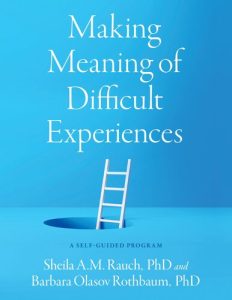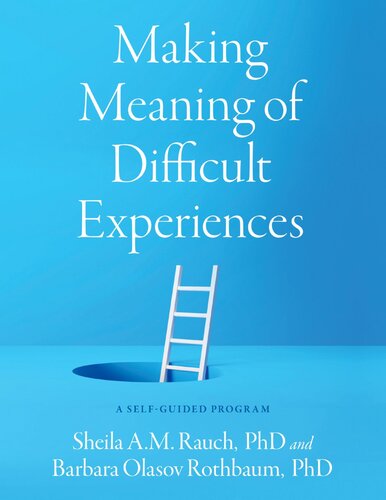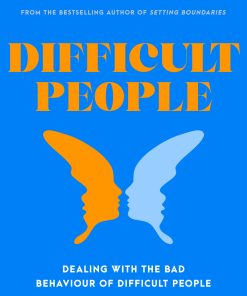Making Meaning of Difficult Experiences Sheila A. M. Rauch
$50.00 Original price was: $50.00.$25.00Current price is: $25.00.
Making Meaning of Difficult Experiences – Ebook Instant Download/Delivery ISBN(s): 9780197642573,0197642578

Product details:
- ISBN-10 : 0197642578
- ISBN-13 : 978-0197642573
- Author(s): Sheila A. M. Rauch, Barbara Olasov Rothbaum
Up to 90% of adults in the US will experience one or more traumatic events in their lifetimes, including interpersonal violence, traffic collisions, and sexual assault. Traumatic events and other difficult experiences (such as miscarriage, job loss, and divorce) can have a long-lasting impact on mental health and well-being. While most who suffer a trauma naturally recover over time, for others difficulties continue, and may lead to full-blown depression, posttraumatic stress disorder (PTSD), substance use, anxiety disorders, and other problems that interfere with healthy daily functioning.
Making Meaning of Difficult Experiences is a self-guided mental health resource for people who have had potentially traumatic experiences and who wish to work through them independently, outside of a formal therapeutic setting. Based on psychological treatments with strong scientific support, this book introduces readers to several useful tools that will help them to emotionally process difficult experiences, with the goal of moving on from the event and building future resilience. Many years of research (much of which has been conducted by the authors of this volume) have shown that people who try to avoid memories and reminders of difficult experiences are more likely to develop PTSD, depression, and other problems. Conversely, those who work to process the memory gradually regain a general sense of wellbeing, experiencing fewer mental health issues over time. This program is unique in that it is intended to be wholly self-directed. Readers can learn about and then immediately practice the strategies described, moving through and then past difficult experiences–whether they happened last week or years ago. The program takes the reader step-by-step through four skill sets to facilitate emotional processing of difficult experiences: Memory Exposure and Processing, Behavioral Activation, Social Connection, and Self-Care. Each set begins with a short description, followed by a self-assessment. Readers use this self-evaluation to determine what is working or not working for them, enabling them to focus more on certain skills, or to complete the full program based on their needs.
Table contents:
Introduction
Chapter 1: Traumatic Experiences
Chapter 2: Why Approach Difficult Experiences?
Chapter 3: How to Approach Difficult Experiences: Memory Exposure and Processing
Chapter 4: Getting Active
Chapter 5: The Healing Power of Social Connection
Chapter 6: Self-Care
Chapter 7: Closing the Book on Difficult Experiences
Appendix A: Worksheets
Appendix B: Suggestions for Pleasant Activities
Appendix C: Additional Resources
Index
People also search:
making meaning of difficult experiences a self-guided program
make it difficult meaning
difficult experience meaning
making difficult synonym
making things difficult
what is a difficult experience
making difficult decisions
You may also like…
Fiction - Literary Fiction
Politics & Philosophy - General & Miscellaneous Philosophy
Business & Economics - Management & Leadership
Managerial Accounting: The Cornerstone of Business Decision-Making 7th Edition Maryanne M. Mowen
Uncategorized
(EBOOK PDF)Difficult People 1st edition by Rebecca Ray 9781761261664 1761261665 full chapters
Religion & Spirituality
Meaning-Making in the Contemporary Congregational Song Genre 1st ed. Edition Daniel Thornton
Politics & Philosophy - Major Branches of Philosophical Study
Arts - Performing Arts
Politics & Philosophy
Politics & Philosophy - General & Miscellaneous Philosophy













